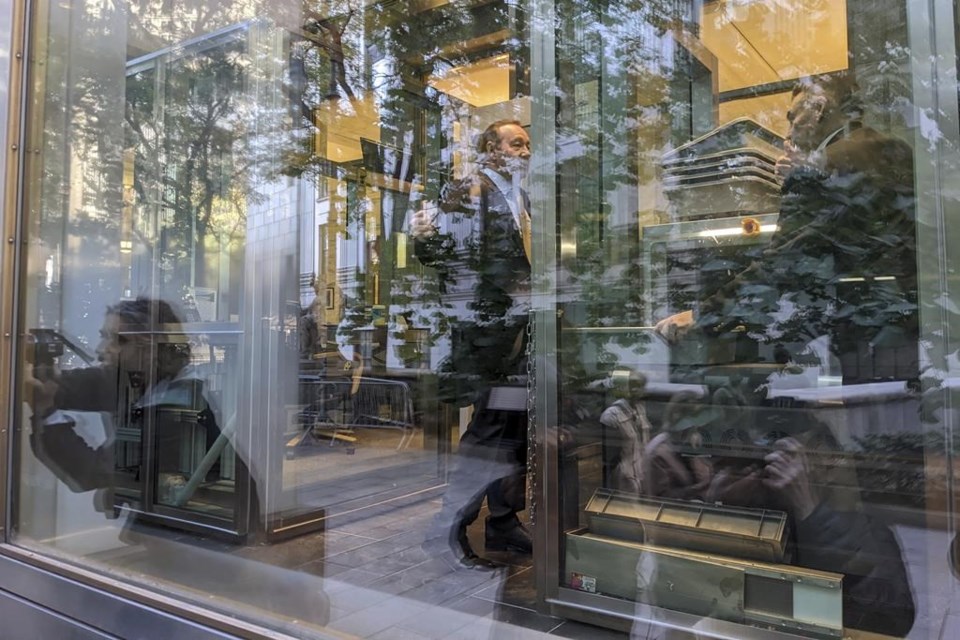NEW YORK (AP) — On Thursday morning, photographers and videographers hovered outside in the walkway between two large old courthouses in lower Manhattan. Which Oscar winner named in #MeToo lawsuits would arrive first? Actor Kevin Spacey? Screenwriter and director Paul Haggis?
This morning, it was Haggis at 8:59 a.m., going through the back entrance of 60 Centre Street. Minutes later, at 9:12 a.m., Spacey arrived, exiting a black SUV with a security detail and entering the federal courthouse next door at 500 Pearl Street, where Ponzi scheme mastermind Bernie Madoff pled guilty more than a decade ago. Hours later, a jury would conclude that Spacey did not molest accuser Anthony Rapp.
Camera-toting members of the media sometimes seem to draw a mixture of disgust, fear and fascination from their subjects. Spacey is impervious to shouted questions from the media scrum, declining to throw as much as a glance at the waiting journalists. Haggis doesn't respond to questions, either, but generally still chooses to go in through the back of the courthouse, in view of the journalists who have been staking out Spacey for weeks.
On Wednesday, though, the security line was too long so a half-dozen media members wound through myriad temporary security fences as Haggis, known for “Million Dollar Baby” and “Crash,” went around and up the front steps famous from the original “Law & Order” television show.
Haggis is fighting a lawsuit from publicist Haleigh Breest, who alleges he raped her. He says their 2013 encounter was consensual.
Spacey had been accused by Rapp, a fellow actor, of making a sexual pass at Rapp when he was 14 in the 1980s. Spacey had testified that the encounter never happened.
The Associated Press does not name people who say they are victims of sexual assault, unless they come forward publicly.
On Thursday, Rapp arrived at 500 Pearl more than 20 minutes before Spacey, while Breest went in through the back of 60 Centre just minutes after Haggis.
Cameras are not allowed in federal courthouses, so the shots of Spacey coming and going outside are the only visuals news photographers and video journalists will get. The judge in the Haggis case allows limited photos in the courtroom but no video.
Although a stakeout may seem paparazzi-like, as one passerby recently contended, the people behind the still and video cameras in the scrum are journalists, seeking to inform the public about the state of #MeToo five years after the hashtag became a rallying call for survivors of sexual assault and harassment.
Ted Shaffrey, The Associated Press



